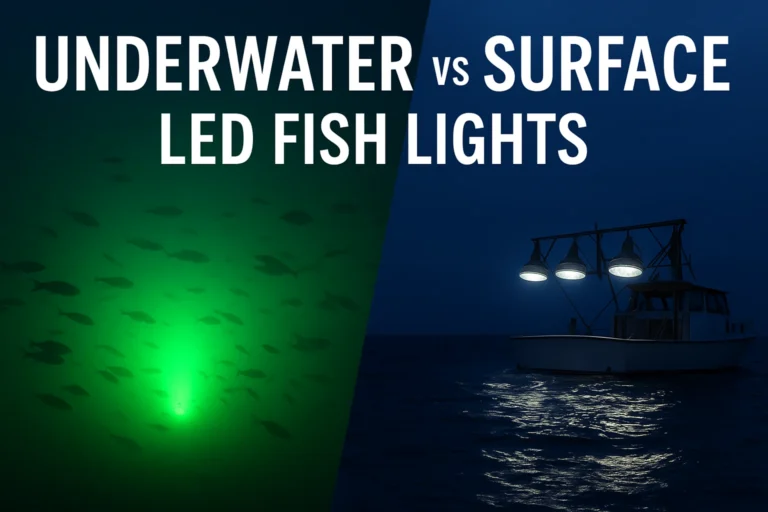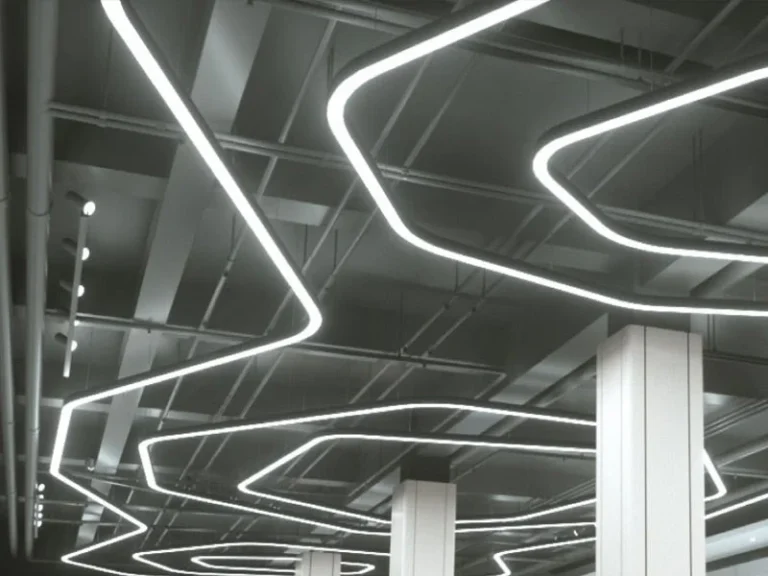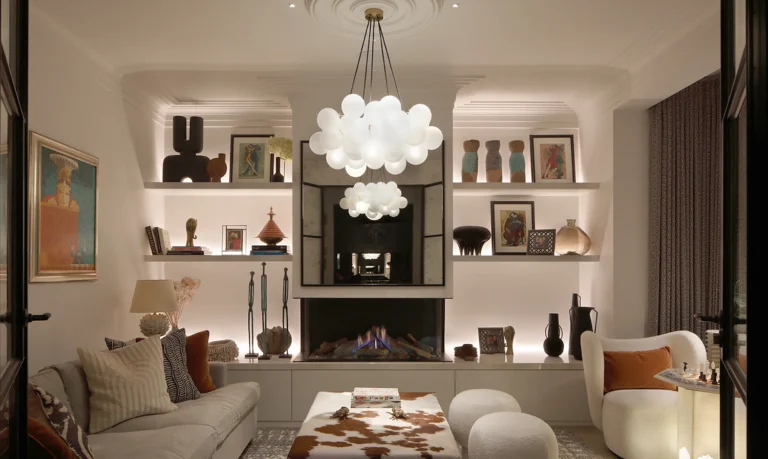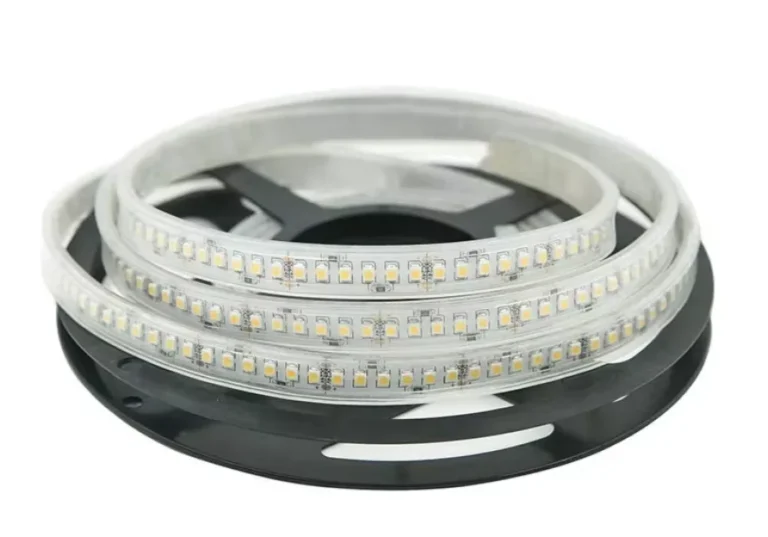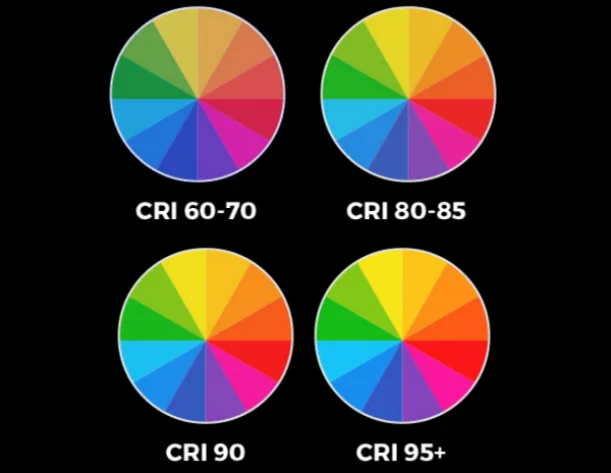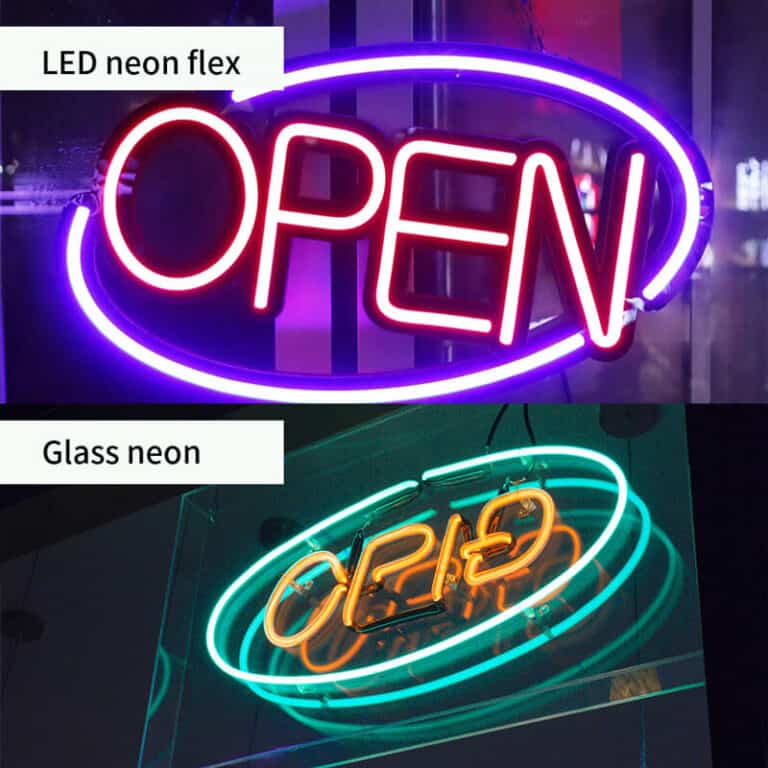ด้วยการพัฒนาเทคโนโลยี LED อย่างรวดเร็ว ผลิตภัณฑ์แสงสว่างจึงสว่างขึ้น มีประสิทธิภาพมากขึ้น และใช้กันอย่างแพร่หลายในโครงการเชิงพาณิชย์และที่อยู่อาศัย อย่างไรก็ตาม แหล่งกำเนิดแสงที่มีความเข้มสูงอาจก่อให้เกิดความเสี่ยงต่อดวงตาและผิวหนังของมนุษย์ เพื่อความปลอดภัย มาตรฐานสากล เช่น IEC 62471 ถูกนำมาใช้เพื่อประเมินความปลอดภัยทางแสงของแสง LED สำหรับผู้ผลิตและผู้นำเข้า การทำความเข้าใจและปฏิบัติตามมาตรฐานนี้เป็นสิ่งสำคัญในการปฏิบัติตามกฎระเบียบของตลาดและปกป้องผู้ใช้จากอันตรายที่เกี่ยวข้องกับแสงที่อาจเกิดขึ้น
ไออีซี 62471 คืออะไร?
IEC 62471 เป็นมาตรฐานสากลที่พัฒนาโดย International Electrotechnical Commission (IEC) ซึ่งกำหนดความปลอดภัยทางแสงของหลอดไฟและระบบหลอดไฟ รวมถึง LED โดยจะประเมินอันตรายที่อาจเกิดขึ้นจากรังสีออปติคัลที่ปล่อยออกมาจากแหล่งกำเนิดแสง
มาตรฐานนี้มักจะประสานกันเป็น EN 62471 ในยุโรปและเป็นข้อกำหนดหลักสำหรับการทำเครื่องหมาย CE และความปลอดภัย โดยพื้นฐานแล้ว IEC 62471 ช่วยพิจารณาว่าผลิตภัณฑ์แสงสว่างนั้นปลอดภัยสำหรับการสัมผัสของมนุษย์ในระยะยาวหรือไม่ โดยให้กรอบการทำงานทางวิทยาศาสตร์สำหรับการจำแนกประเภทความเสี่ยงและการติดฉลากความปลอดภัย

IEC 62471 ประเมินอะไร?
IEC 62471 มุ่งเน้นไปที่ผลกระทบทางชีวภาพของรังสีแสงที่ปล่อยออกมาจากไฟ LED และอื่น ๆ ไฟ LED. การทดสอบจะประเมินการสัมผัสกับบริเวณความยาวคลื่นต่างๆ ที่อาจส่งผลต่อดวงตาหรือผิวหนัง ส่วนใหญ่รวมถึง:
อันตรายจากรังสียูวี: ความเสี่ยงของผิวหนังไหม้หรือตาอักเสบที่เกิดจากรังสีอัลตราไวโอเลต
อันตรายจากแสงสีน้ำเงิน: ความเสียหายที่อาจเกิดขึ้นกับเรตินาเนื่องจากแสงสีน้ำเงินที่มีความเข้มสูง ซึ่งพบได้บ่อยในไฟ LED สีขาว
อันตรายจากอินฟราเรด: ความเสียหายที่เกี่ยวข้องกับความร้อนต่อผิวหนังหรือดวงตาที่เกิดจากรังสีอินฟราเรด
จากผลการวัด แหล่งกำเนิดแสงแบ่งออกเป็นสี่กลุ่มเสี่ยง:
กลุ่มที่ได้รับการยกเว้น (RG0): ไม่มีความเสี่ยงจากโฟโตไบโอโลยี
กลุ่มเสี่ยง 1 (RG1): ความเสี่ยงต่ำภายใต้สภาวะปกติ
กลุ่มเสี่ยง 2 (RG2): ความเสี่ยงปานกลาง หลีกเลี่ยงการสัมผัสดวงตาโดยตรง
กลุ่มเสี่ยง 3 (RG3): มีความเสี่ยงสูง ต้องใช้มาตรการด้านความปลอดภัย
การจัดหมวดหมู่นี้ช่วยให้ผู้ผลิตติดฉลากผลิตภัณฑ์ของตนอย่างถูกต้องและให้แน่ใจว่าผู้ใช้ปลายทางนำไปใช้อย่างปลอดภัย
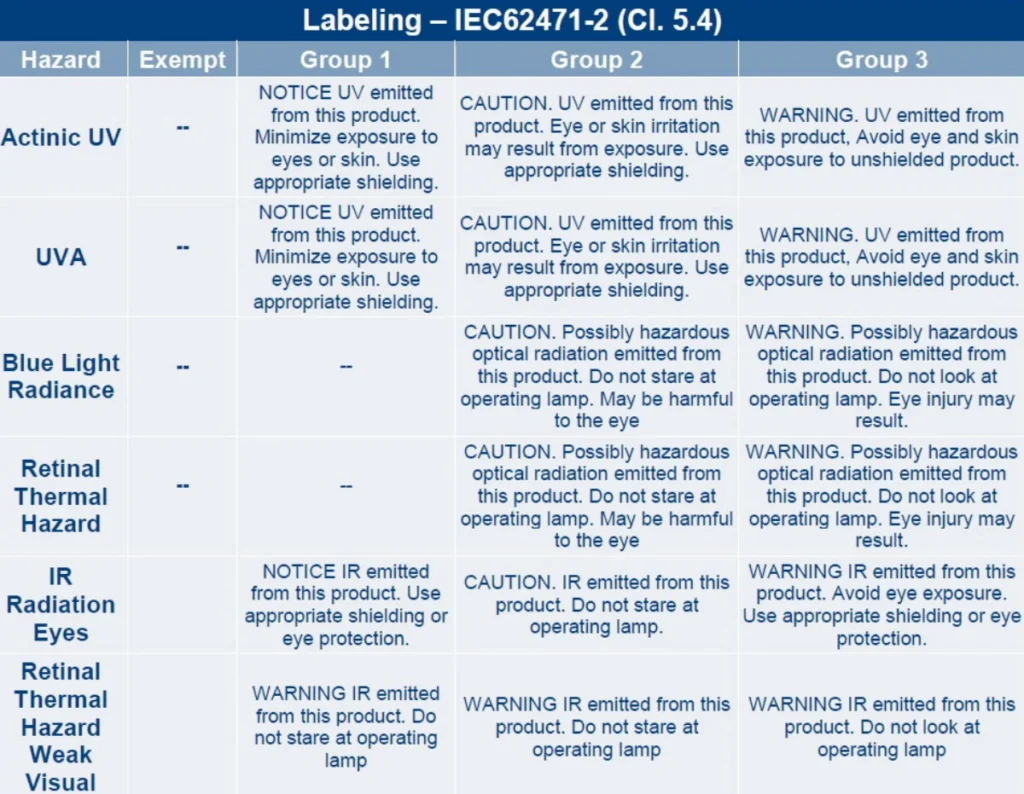
เหตุใดการทดสอบ IEC 62471 จึงมีความสำคัญต่อไฟ LED
สำหรับผู้ผลิต LED การทดสอบ IEC 62471 ไม่ได้เป็นเพียงการปฏิบัติตามข้อกำหนดเท่านั้น แต่ยังเกี่ยวกับความน่าเชื่อถือของผลิตภัณฑ์ ชื่อเสียงของแบรนด์ และการเข้าถึงตลาด
ข้อกำหนดด้านกฎระเบียบ: หลายภูมิภาค รวมทั้งสหภาพยุโรป กำหนดให้มีการปฏิบัติตามข้อกำหนด IEC/EN 62471 สำหรับผลิตภัณฑ์แสงสว่างก่อนจึงจะสามารถขายได้
ความปลอดภัยของผู้ใช้: ช่วยให้มั่นใจได้ว่าไฟ LED จะไม่ปล่อยระดับรังสีที่เป็นอันตรายซึ่งอาจทำให้มองเห็นหรือผิวเสียหายได้
ข้อได้เปรียบทางการตลาด: ผลิตภัณฑ์ที่มีการตรวจสอบความปลอดภัยที่ผ่านการตรวจสอบแล้วจะได้รับความไว้วางใจที่สูงขึ้นในหมู่ผู้จัดจำหน่าย ผู้ออกแบบโครงการ และลูกค้าปลายทาง
การจัดการความเสี่ยง: ช่วยลดความเสี่ยงด้านความรับผิดสำหรับผู้ผลิตและผู้นำเข้าในกรณีของการร้องเรียนเกี่ยวกับสุขภาพ
พูดง่ายๆ ก็คือ การรับรอง IEC 62471 พิสูจน์ให้เห็นว่าผลิตภัณฑ์แสงสว่างของคุณปลอดภัย รับผิดชอบ และออกแบบอย่างมืออาชีพสำหรับตลาดโลก
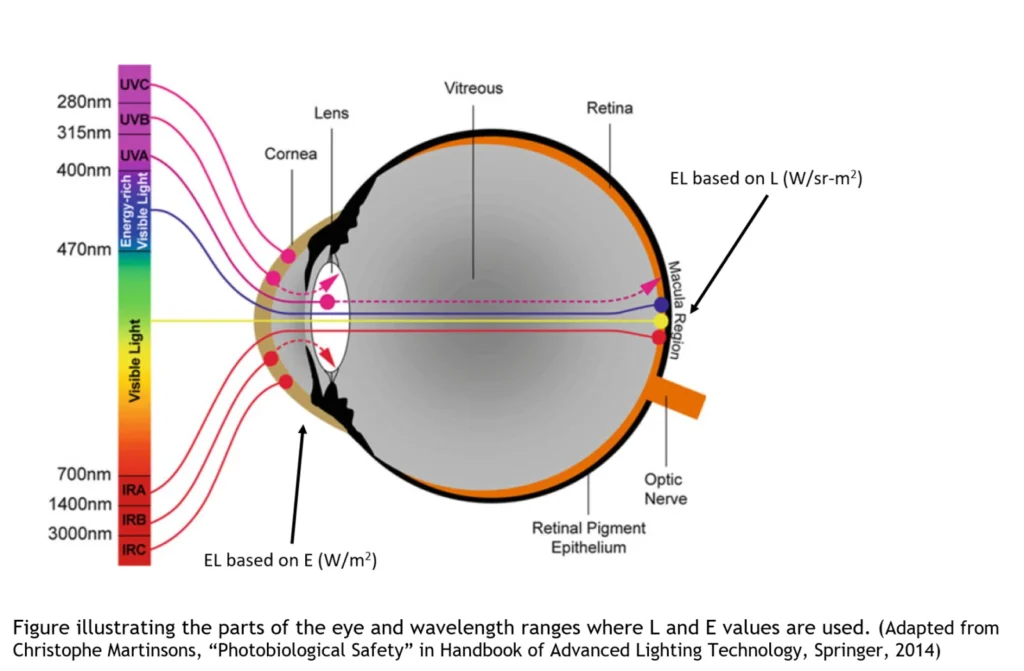
วิธีตรวจสอบให้แน่ใจว่าอุปกรณ์ติดตั้ง LED ของคุณผ่านการทดสอบ IEC 62471
การปฏิบัติตามข้อกำหนด IEC 62471 เริ่มต้นด้วยการออกแบบออปติคัลที่ดีและการเลือกวัสดุ ต่อไปนี้เป็นคำแนะนำที่เป็นประโยชน์หลายประการ:
ปรับแสงให้เหมาะสมที่สุด: ลดแสงสีฟ้าที่มากเกินไปโดยการปรับชิป LED และอุณหภูมิสี โดยปกติ CCT ที่ต่ำกว่า 4000K จะผ่านการทดสอบได้ง่ายกว่า
ใช้ดิฟฟิวเซอร์หรือเลนส์: การเพิ่มดิฟฟิวเซอร์ช่วยกระจายแสงอย่างสม่ำเสมอและลดระดับการฉายรังสี
ควบคุมระยะและมุมลำแสง: การออกแบบอุปกรณ์เพื่อให้ผู้ใช้ไม่ต้องสัมผัสกับลำแสงที่รุนแรงโดยตรง
การทดสอบล่วงหน้าระหว่างการพัฒนา: ทำการประเมินทางแสงเบื้องต้นในช่วงต้นของการวิจัยและพัฒนาเพื่อระบุความเสี่ยงที่อาจเกิดขึ้นก่อนการผลิตจำนวนมาก
การทำงานกับห้องปฏิบัติการที่ได้รับการรับรอง: ห้องปฏิบัติการทดสอบที่ผ่านการรับรอง เช่น TUV, SGS หรือ Intertek สามารถให้รายงาน IEC 62471 ที่ถูกต้องและคำแนะนำจากผู้เชี่ยวชาญ
การทำตามขั้นตอนเหล่านี้จะเพิ่มโอกาสในการผ่านการทดสอบอย่างราบรื่นและทำให้ผลิตภัณฑ์ของคุณเป็นไปตามมาตรฐานความปลอดภัยระดับสากล

บทสรุป
ในขณะที่ไฟ LED ยังคงพัฒนาต่อไป ความปลอดภัยของแสงชีวภาพได้กลายเป็นส่วนสำคัญของการปฏิบัติตามข้อกำหนดของผลิตภัณฑ์และความสามารถในการแข่งขันของตลาด การทำความเข้าใจ IEC 62471 และการออกแบบโดยคำนึงถึงความปลอดภัยจะช่วยให้ผู้ผลิตสร้างผลิตภัณฑ์แสงสว่างที่ทั้งมีประสิทธิภาพและปลอดภัยสำหรับการใช้งานของมนุษย์
ที่ SignliteLED, เราออกแบบและผลิตอุปกรณ์ติดตั้ง LED คุณภาพสูงที่ได้มาตรฐานสากลรวมถึง IEC 62471 ทีมวิศวกรรมของเรามุ่งเน้นไปที่ความปลอดภัยของแสงและการปฏิบัติตามข้อกำหนดเพื่อให้แน่ใจว่าโครงการแสงสว่างของคุณสามารถเข้าสู่ตลาดโลกด้วยความมั่นใจ
หากคุณกำลังพัฒนาหรือจัดหาผลิตภัณฑ์ LED และต้องการให้แน่ใจว่าพวกเขาผ่านการทดสอบ IEC 62471 โปรดติดต่อ Signliteled เพื่อขอรับการสนับสนุนอย่างมืออาชีพและโซลูชันไฟ LED แบบกำหนดเอง
